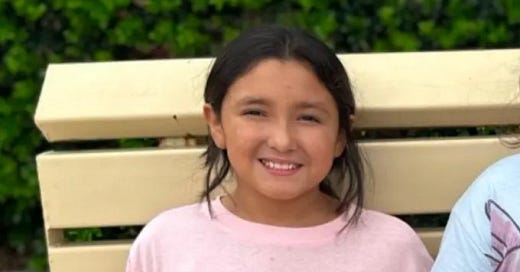How a Failed System Killed Jocelynn Rojo Carranza
An overview of the tragic death of Jocelynn Rojo Carranza
(Photo from CNN)
The devastating loss of 11-year-old Jocelynn Rojo Carranza is more than just a tragedy—it’s a painful reminder of how deeply our systems are failing the children who need protection the most. On February 8, 2025, after spending several days in intensive care at Medical City Dallas Hospital, Jocelynn passed away due to suicide. Her family is now grappling with an unimaginable reality: their bright, loving little girl is gone, all because she endured relentless bullying at school and felt there was no way out.
Jocelynn’s mother, Marbella Carranza, shared that her daughter was constantly harassed at Gainesville Intermediate School. Classmates targeted her with cruel words and threats, even telling her that Immigration and Customs Enforcement (ICE) would come for her family. No child should have to carry that kind of fear. However, Marbella only discovered the full extent of Jocelynn’s suffering after it was too late—learning that her daughter had been seeking help from the school counselor once or twice a week. Jocelynn was reaching out, trying to cope, but nothing changed. She was fighting a battle no child should ever have to fight alone.
In response, the Gainesville Independent School District (GISD) released a statement reaffirming its “zero-tolerance” policy on bullying. But what does a policy mean if a child repeatedly asks for help and still feels unheard, unsafe, and alone?
Despite Jocelynn’s multiple visits to the counselor, the school never informed her mother about what was happening. That silence is deafening. If a school’s policies don’t protect the most vulnerable students when they need it most, then they are nothing more than empty promises.
Jocelynn’s story is not an isolated tragedy—it’s part of a broader crisis within immigrant communities. As of 2022, around 46.2 million foreign-born individuals live in the U.S., making up nearly 13.9% of the population. Many of these families live under constant fear of deportation, a fear exacerbated by aggressive immigration enforcement policies. In 2024 alone, the Department of Homeland Security reported nearly 3 million inadmissible encounters, highlighting the increasing pressure on immigrant families.
This fear extends beyond legal status—it seeps into classrooms, where immigrant children are often the targets of bullying and xenophobia. Nationally, about one in five students between the ages of 12 and 18 experience bullying each year, and for immigrant children, that bullying is often tied to their identity. When children like Jocelynn hear classmates weaponizing deportation threats against them, it’s not just bullying—it’s trauma.
This is about more than one child, one school, or one city. It’s about a system that continues to fail immigrant kids, leaving them vulnerable to harassment, fear, and neglect. Schools often emphasize their zero-tolerance policies, but when a child repeatedly seeks help and still feels hopeless and alone, it raises a serious question about the effectiveness of the system designed to protect them.
Jocelynn should still be here.
Her story cannot be just another tragic headline. It must be a wake-up call. Schools need to prove their commitment to student safety by prioritizing transparency, informing parents, and taking immediate, meaningful action when a child speaks up. Because if a system cannot protect its most vulnerable students, then what is it even for?
I’d love to hear from you…





The climate around immigration is not just a function of the cruel, indiscriminate enforcement of immigration policy, it's also the dehumanizing language that poisons public discourse. That trickles down to parents and, yes, children. Also, failing to inform the parents was a gross oversight.